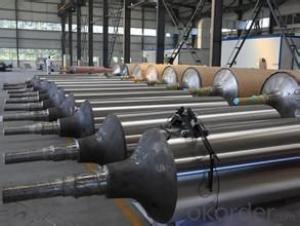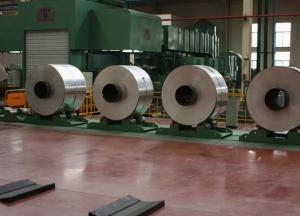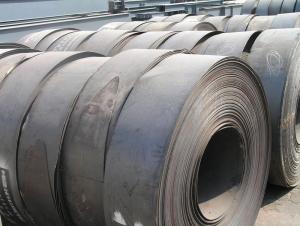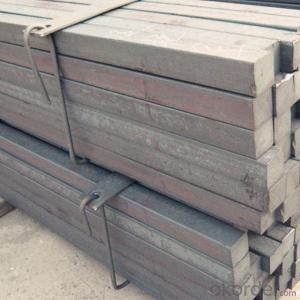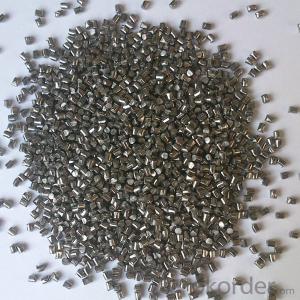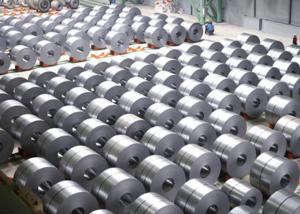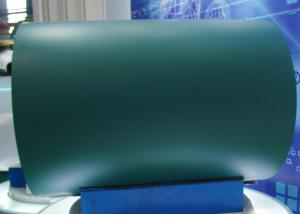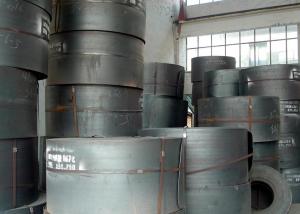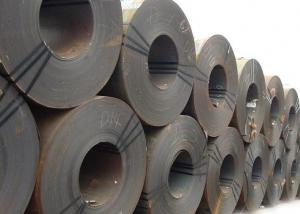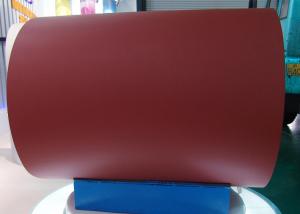Induction Heating Furnace for steel billet forging, hot rolled
- Loading Port:
- Tianjin
- Payment Terms:
- TT OR LC
- Min Order Qty:
- 1000 PCS
- Supply Capability:
- 10000 PCS/month
OKorder Service Pledge
OKorder Financial Service
You Might Also Like
Quick Details
| Condition: | New | Type: | Induction Furnace | Usage: | Heat Treatment Furnace |
| Place of Origin: | Brand Name: | Model Number: | GW-1000 | ||
| Voltage: | 660V | Power(W): | 1000KW | Dimension(L*W*H): | customize |
| Weight: | customize | Certification: | 9001 | Warranty: | one year |
| After-sales Service Provided: | Engineers available to service machinery overseas |
Packaging & Delivery
| Packaging Detail: | standard export wooden case |
| Delivery Detail: | have stock 4 days,in production 8 days |
Specifications
1. the heating temperature is high, and is a contact heating
2.high heating efficiency, energy saving
3.heating speed
Induction heating furnace for steel billet forging, hot rolled
1. The heating speed, less oxidation decarburization
Due to the principle of electromagnetic induction heating, the heat inside the workpiece itself, fast heating, the heating way so few oxidation, high heating efficiency, process repeatability.
2. High degree of automation, which can realize full automatic operation
Selects the automatic feeding and automatic discharge sorting device, deserve to go up in our company is special control software, but to achieve automatic operation.
3. Uniform heating, high precision of temperature
Easy implementation plan heat evenly, core temperature difference is small.Application of temperature control system can realize accurate control of temperature.
4. Simple induction furnace replaced
According to different machining dimensions, the configuration of different specifications of the induction furnace design with water, electrical fast conversion connector, furnace replacement is simple, fast and convenient.
5. Low energy, no pollution
Induction heating compared with other heating mode, high heating efficiency, low energy consumption, no pollution;All the indexes can meet user requirements.Heating conditions, by have heated to 1250 °C tons of power consumption is less than 380 degrees.Have lower costs than use natural gas or coal to heat, and can improve working conditions for workers.
Energy-saving GW medium frequency heating furnace
Summary: diathermy is refers to the metal thermal deformation or as a whole through heating before heat treatment.
Purpose: GW series heating furnace can be according to the different material workpiece geometry and heating process require the use of 300-8000 hz power for heating.Mainly used in bar, round steel, square steel, steel heating, temperature, quenching blanking, on-line heating, local heating, metal materials in forging (such as connecting rod, gears, half shaft bearing forging), extrusion, hot rolling, shear heating, as well as metal materials of the whole tempering, annealing, tempering, etc.
- Q:What are the different types of steel building systems?
- There are several different types of steel building systems, including rigid frame, arch, clear span, and modular systems.
- Q:How is steel used in the production of bicycles and motorcycles?
- Steel is used in the production of bicycles and motorcycles mainly for their frames and other structural components. It provides strength, durability, and stability, making it an ideal material for these vehicles. Steel frames are known for their ability to absorb shocks and vibrations, ensuring a smooth and comfortable ride. Additionally, steel can be easily welded, allowing for intricate designs and customization options.
- Q:How are steel products used in the water treatment industry?
- Steel products are used in the water treatment industry for various purposes such as the construction of water tanks, pipelines, and treatment equipment. They provide durability, corrosion resistance, and strength, ensuring a reliable infrastructure for storing, transporting, and treating water.
- Q:What are the different types of steel chains and their uses?
- There are various types of steel chains, each designed for specific applications. Some common types include welded chains, roller chains, and stainless steel chains. Welded chains are known for their strength and are commonly used in lifting and towing applications. Roller chains are widely used in machinery and automotive industries to transmit power. Stainless steel chains are corrosion-resistant and are often used in environments where exposure to moisture or chemicals is a concern, such as in food processing or marine applications.
- Q:What are the common uses of steel in the telecommunications industry?
- Steel is commonly used in the telecommunications industry for the construction of towers, transmission lines, and other infrastructure. It provides the necessary strength, durability, and stability needed to support and transmit signals over long distances. Additionally, steel is used in the manufacturing of various telecommunications equipment, such as antennas, satellite dishes, and cable trays.
- Q:What are the different types of steel tanks and their applications?
- There are various types of steel tanks used for different applications. Some common types include above ground storage tanks (ASTs) used for storing liquids such as petroleum, chemicals, or water; underground storage tanks (USTs) typically used for storing hazardous materials or petroleum products; and pressure vessels used in industrial processes for containing gases or liquids under high pressure. Additionally, steel tanks can be categorized based on their design, such as cylindrical, rectangular, or spherical tanks. The specific application of steel tanks depends on factors like the type of material being stored, the required volume or capacity, and the environmental conditions in which they will be used.
- Q:How is steel used in the production of solar panels?
- Steel is primarily used in the production of solar panels for structural support and framing, providing durability and stability to the panels. It is commonly used for mounting systems, racking, and frames, ensuring that solar panels are securely positioned and able to withstand environmental conditions.
- Q:What are the different types of steel wire ropes and their uses in marine applications?
- There are various types of steel wire ropes used in marine applications. Some common ones include galvanized steel wire ropes, stainless steel wire ropes, and PVC-coated steel wire ropes. Galvanized steel wire ropes are coated with zinc to protect against corrosion and are commonly used for general marine applications such as mooring lines, towing, and rigging. Stainless steel wire ropes, on the other hand, are highly resistant to corrosion and are often utilized in marine environments with high exposure to saltwater, such as for yacht rigging, fishing nets, and architectural elements on boats. PVC-coated steel wire ropes provide an additional layer of protection against corrosion and are suitable for applications where abrasion resistance is required, such as in winches, cranes, and lifting equipment used in marine settings. Overall, the choice of steel wire rope in marine applications depends on factors like the level of corrosion resistance needed, the specific application requirements, and the environmental conditions it will be exposed to.
- Q:What are the factors that affect the price of steel products?
- There are several factors that affect the price of steel products. These include the cost of raw materials, such as iron ore and coal, as well as energy prices and transportation costs. Other factors include supply and demand dynamics, global economic conditions, trade policies and tariffs, and the overall level of competition in the steel industry. Additionally, currency exchange rates and government regulations can also have an impact on steel prices.
- Q:What are the different types of steel springs and their uses?
- There are several types of steel springs, each with their specific uses. Some common types include compression springs, extension springs, torsion springs, and flat springs. Compression springs are designed to resist compression forces and are used in applications such as automotive suspensions, mattresses, and industrial machinery. Extension springs, on the other hand, are designed to absorb and store energy when pulled apart and are commonly used in garage doors, trampolines, and various mechanical devices. Torsion springs provide a rotational force and are commonly found in clothespins, garage door systems, and various small appliances. Flat springs, also known as leaf springs, are used in applications that require high strength and flexibility, such as automotive suspensions, agricultural equipment, and heavy machinery. Each type of steel spring has its unique properties and applications, making them essential components in various industries.
1. Manufacturer Overview |
|
|---|---|
| Location | |
| Year Established | |
| Annual Output Value | |
| Main Markets | |
| Company Certifications | |
2. Manufacturer Certificates |
|
|---|---|
| a) Certification Name | |
| Range | |
| Reference | |
| Validity Period | |
3. Manufacturer Capability |
|
|---|---|
| a)Trade Capacity | |
| Nearest Port | |
| Export Percentage | |
| No.of Employees in Trade Department | |
| Language Spoken: | |
| b)Factory Information | |
| Factory Size: | |
| No. of Production Lines | |
| Contract Manufacturing | |
| Product Price Range | |
Send your message to us
Induction Heating Furnace for steel billet forging, hot rolled
- Loading Port:
- Tianjin
- Payment Terms:
- TT OR LC
- Min Order Qty:
- 1000 PCS
- Supply Capability:
- 10000 PCS/month
OKorder Service Pledge
OKorder Financial Service
Similar products
New products
Hot products
Related keywords
